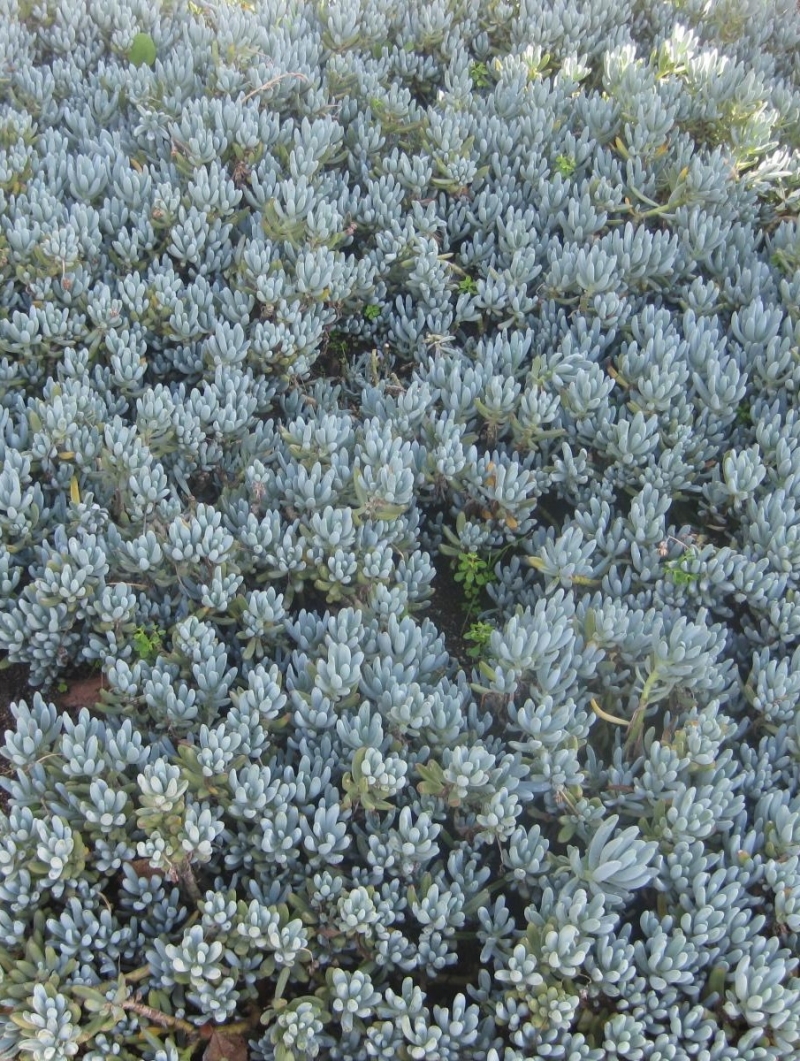

| synonyms | Curio repens | |
| height | 4–10in | |
| width | 2–3ft | |
| tolerates | Drought, Fog, Heat, Wind | |
| water needs |
Low | |
| water info |
Senecios are thrifty low-water succulent plants that are very versatile. They should be watered when dry. Generally they’ll want water every two to three weeks during the dry season to keep looking their best. To keep long strings of leaves consistent, watering once almost completely dry is paramount. Too much water will rot the stems (requiring them to be re-rooted) and too little water will cause the plant to use the water in lower leaves and then shed them. If you see your leaves shriveling, your plant is ready for a drink. |
|
| hardy to |
25F | |
| exposure | Full Sun – Part Shade | |
| indoor outdoor |
Outdoor | |
| origin | W South Africa | |
| california native |
No | |
| sunset zones |
15–17, 19–24 |
Full Sun
Six or more hours of sun beams directly landing on the plant's leaves.
Part Shade
Three to five hours of sun beams directly landing on the plant's leaves.
Part Sun
One to two hours of sun beams directly landing on the plants leaves.
Full Shade
The plant is never fully lit by sun beams,
but is in a bright spot or has dappled sunbeams playing over the leaves throughout the day.
Deep Shade
The plant never has dappled light on the leaves, and is in a place that feels dim, even on a nice sunny day.
